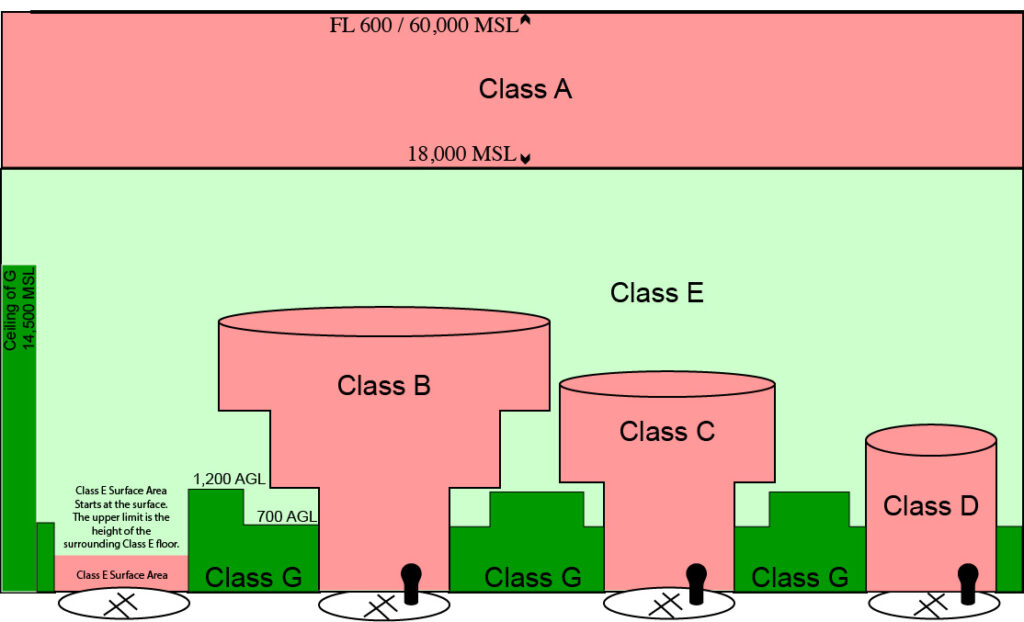Class G
Permission is not required.
Think of G as in “Ground” (It’s the airspace that covers most of the ground in the U.S.)
Class G airspace is uncontrolled airspace that has not been designated as Class A, B, C, D, or E.
The only requirements are to have 1 mile of visibility and to stay clear of clouds. “Clear of clouds” means you should not fly in/through clouds. You can get as near as you want, but flying in the clouds is still prohibited.
There are a few other limitations to be aware of in Class G airspace:
FAA Regulations for Class G Airspace
If you are above 1200′ AGL, but lower than 10,000′ MSL, you must remain 500 ft below, 1000 ft above, and 2000 ft horizontal of clouds AND must have 1 mile of visibility.
If you are 10,000′ MSL or higher you must remain 1000 ft below, 1000 ft above, and 1 SM horizontal of clouds AND must have 5 miles of visibility.
The key to understanding Class G airspace is to first understand Class E airspace.
In remote areas, Glass G may go up to (but not including) 14,500′ MSL. In most places, G Airspace starts at the surface and goes up 700′ AGL or 1200′ AGL where Class E starts.

